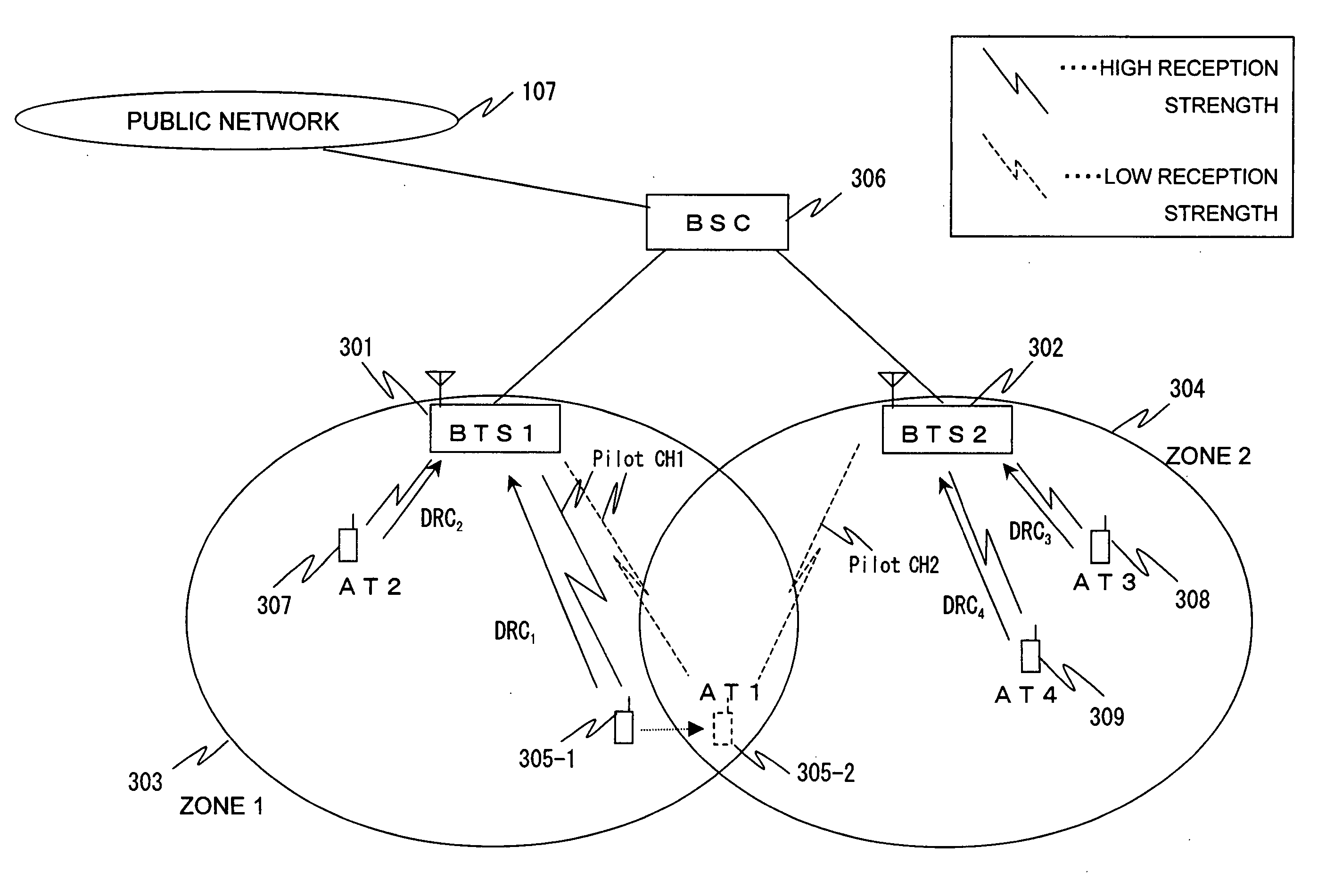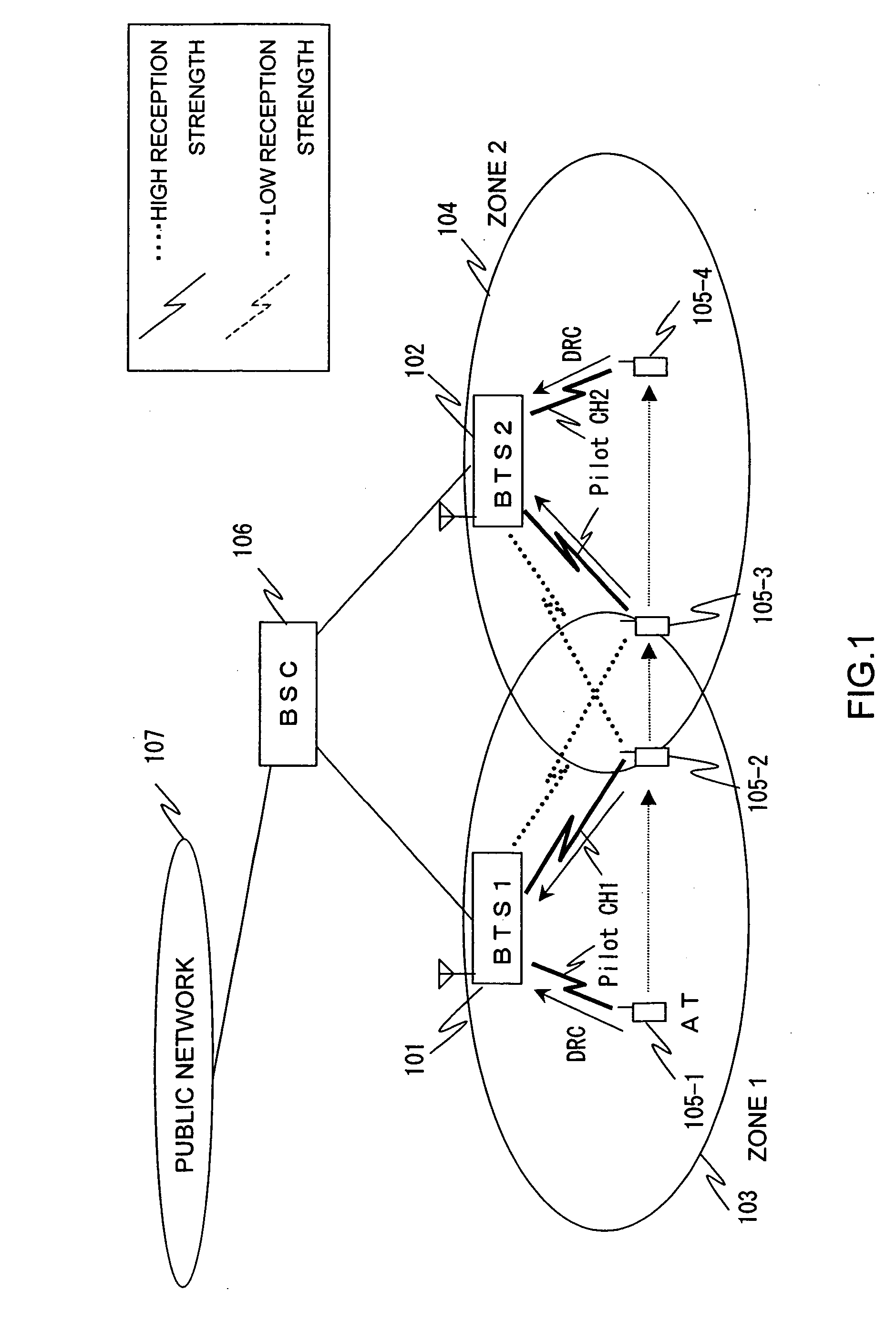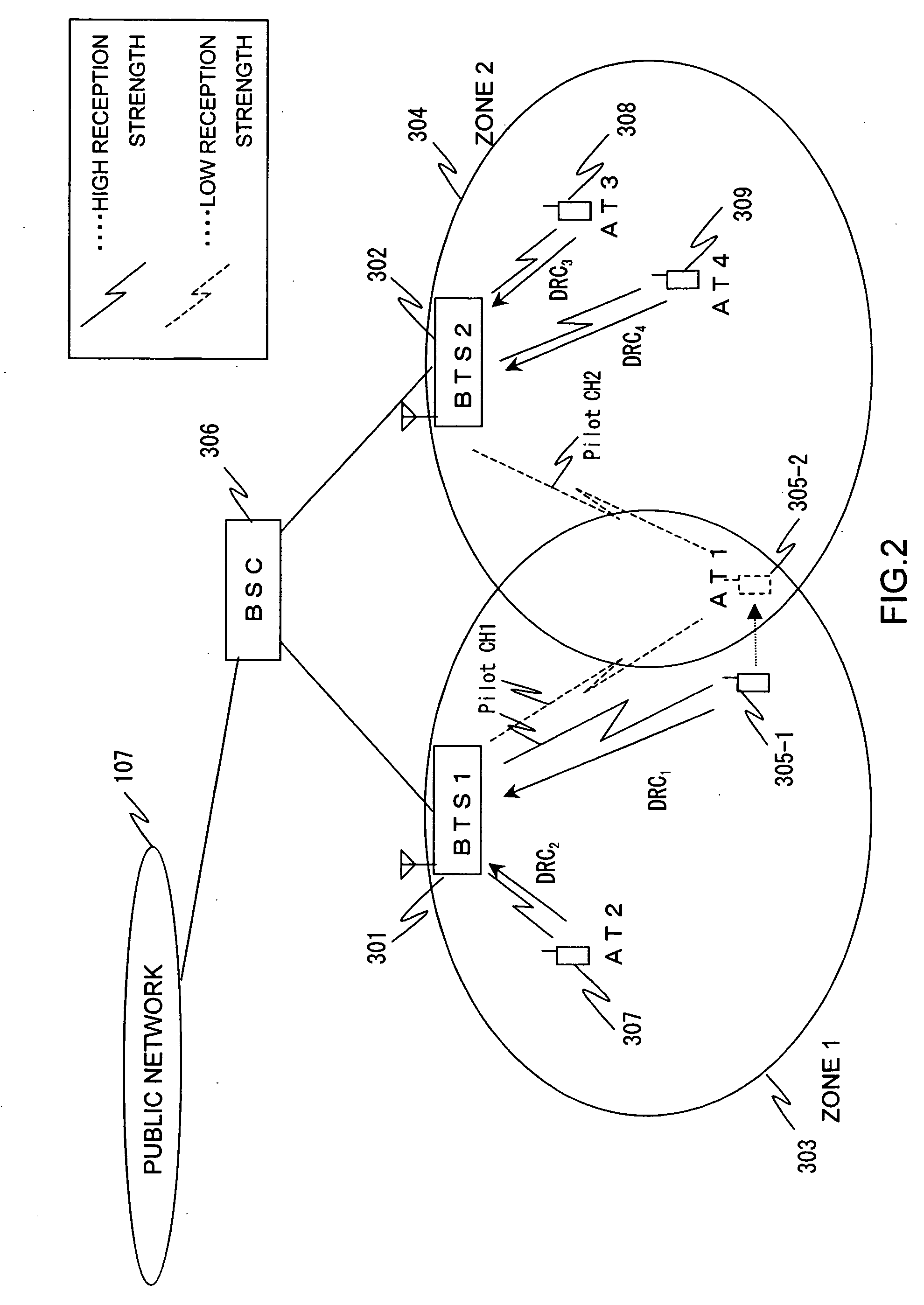Handoff control method, base station controller, and base transceiver subsystem
a control method and controller technology, applied in the field of handoff control methods, base station controllers, and base transceiver subsystems, can solve the problems of increasing radio interference from the adjacent base transceiver subsystem, affecting the service quality, and affecting the user's experience, so as to achieve the highest estimated throughput ratio, increase throughput, and increase the effect of throughpu
- Summary
- Abstract
- Description
- Claims
- Application Information
AI Technical Summary
Benefits of technology
Problems solved by technology
Method used
Image
Examples
Embodiment Construction
[0072]FIGS. 2 and 3 show configurations of a mobile communication system according to an embodiment of the present invention.
[0073] Two access terminals AT1 in a position 305-1 and AT2 in a position 307 are communicating with BTS1301 in a first zone 303, and two access terminals AT3 in a position 308 and AT4 in a position 309 are communicating with BTS2302 in a second zone 304. BTS1301 and BTS2302 are wired through a BSC 306 to a public network 107 such as an IP network. A solid line representing radio waves indicates that the radio signal is received with a high strength while a broken line indicates that the strength is low.
[0074]FIG. 2 shows that AT1 is moving from the position 305-1 to a position 305-2. During the movement from the position 305-1 to the position 305-2, which is close to BTS2302, the AT1 keeps receiving the Pilot CH1 signal from BTS1301 in the first zone 303. The position 305-2 is on the boundary of the first zone 303 and the second zone 304, and the Pilot CH2 ...
PUM
 Login to View More
Login to View More Abstract
Description
Claims
Application Information
 Login to View More
Login to View More - R&D
- Intellectual Property
- Life Sciences
- Materials
- Tech Scout
- Unparalleled Data Quality
- Higher Quality Content
- 60% Fewer Hallucinations
Browse by: Latest US Patents, China's latest patents, Technical Efficacy Thesaurus, Application Domain, Technology Topic, Popular Technical Reports.
© 2025 PatSnap. All rights reserved.Legal|Privacy policy|Modern Slavery Act Transparency Statement|Sitemap|About US| Contact US: help@patsnap.com



